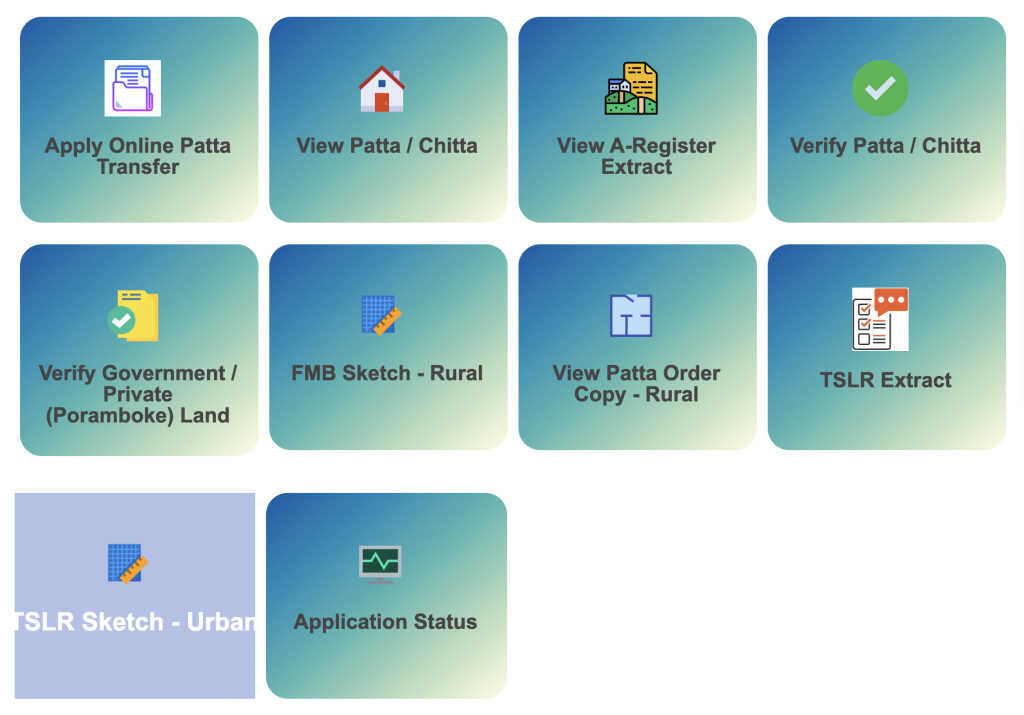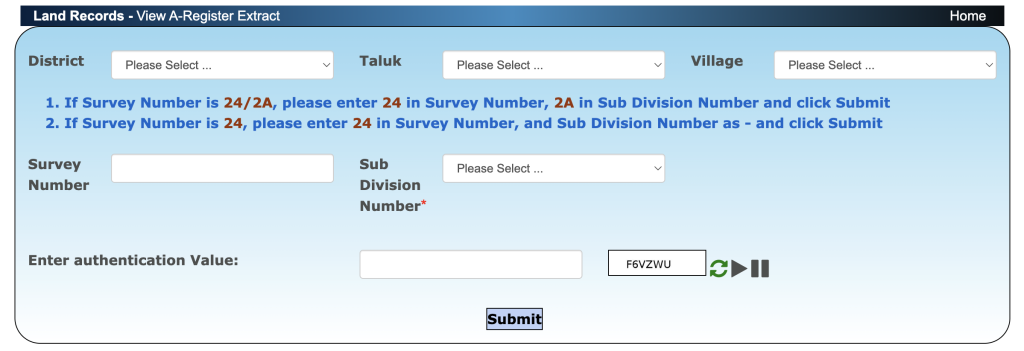Following the digitization wave in India, several states such as Tamil Nadu have made their land records available online. Since 2015, the Tamil Nadu state land records have been digitized and you can access them online by visiting the e-service website. Interestingly, these digitized land records are still known by their old name, Patta Chitta.
Patta Chitta is a combination of vital documents used for property transactions and documentation in Tamil Nadu. The documents will contain information related to land, its ownership, and revenue records. If you are planning to buy a property in Tamil Nadu, it is essential that Patta Chitta certificate for the same is available.
Patta (formerly known as Patta Chitta, but merged into Patta in 2015) is a legal document conferring the ownership of a piece of land or any other immovable property on a person/s. Here are some instances where the document will be required.
- Patta Chitta establishes legal possession over land in case of vacant plots. This makes it a must in case the landowner is looking to sell the land.
- It is a must in case of any dispute between the government or any third-party landowner and the landholder.
- Patta will be required if the government acquires the land and the landowner is entitled to compensation.
Historical context: Merging Patta and Chitta in 2015
In 2015, the government of Tamil Nadu implemented the digitization of land records to simplify the process of searching for land records online. Both these records were integrated in 2015 and are now available as a single document that contains all information found in Patta.
The residents of Tamil Nadu can now look for their land records online. An e-services portal was introduced in 2015, enabling citizens to view their patta chitta online.
This blog post will help you understand how to submit the application for obtaining Patta Chitta. Read on to know what you need to do when you buy or sell an immovable property like land, a shop, or a house.
What is Patta?
In Tamil Nadu, the document that proves a person’s legal right over property is known as a ‘Patta’. A patta can be obtained from the Tahsildar’s office of the particular district.
Definition and purpose of Patta
Patta is a legal document issued to property owners in Tamil Nadu. The state government issues the document to certify the ownership and location of the land in question.
Components of a Patta document
A Patta document will contain the following information:
- Name of the district, taluk, and village.
- Patta number
- Name of the owner
- Survey number and subdivision
- Wetland or dry land
- Area of the land and tax paid details
How Patta verifies land ownership
Change of land ownership is a legal process that requires the deed to be registered with the local government. Once the deed is registered, the details of the transaction are sent to the tehsil/taluka office to start the process of recording the transfer or change of title of a property in the land records and reflect this change in the record of rights.
Once the transfer comes into effect, the state government provides documentary evidence of the right over land in the form of a patta. This patta is then provided to the buyer as evidence of his possession.
Importance of having a valid Patta for property transactions
Patta is the single most important document as it proves the ownership of the land. When looking to sell the land or transfer the deed of the land to a family member, a Patta is a must. This is because land cannot be registered and ownership cannot be transferred without a Patta.
Patta acts as a primary document in case of land sale or deed transfer. Another use case for Patta is to avail of a bank loan. You will need a Patta for your property in case you are looking to sell it or are planning to pledge it with a financial institution to get a loan.
What is Chitta?
While a Patta is a revenue record of a piece of land, a Chitta is a document containing details about the area, size, and ownership of the property.
Definition and purpose of Chitta
Chitta is the land revenue document maintained by the Taluk office and the Village Administrative Officer (VAO). It includes the name of the actual owner of the land along with all the details about farmland or property.
Role of Chitta in clarifying land details
Chitta includes details like information about the ownership, size, and area of the land. This document is also used to classify the respective piece of land into nanjai (wetland) or punjai (dry land).
How Chitta is maintained by Taluk and VAO offices
In India, you need to register any transaction about a change in land ownership. Chitta is a government document pertaining to immovable property that is maintained by the concerned Village Administrative Officer (VAO) and Taluka office.
Chitta’s relevance in determining land nature and ownership history
We have seen above how Chitta establishes ownership of the land in question and classifies the land into one of the two categories.
As of 2015, the government of Tamil Nadu has stopped issuing Chitta. The Patta and Chitta were merged into one document with all the relevant details mentioned in the Patta. Therefore, a Chitta will only be available for property deeds registered before 2015.
Difference between Patta and Chitta
While both refer to land records, Patta and Chitta have different purposes and aren’t the same:
| Patta – Proof of ownership for a land parcel | Chitta – Detailed survey record of land boundaries and area |
| A Patta is a revenue record of a piece of land. It is issued by the government and is also known as the Record of Rights (ROR). | The Chitta is a land revenue document that contains details about the area, size, and ownership of the property. |
| The Patta includes the Patta number, name of the district, taluk, and village, owner’s name, survey number and subdivision, wetland/dryland, area of land, and tax details. | These details are maintained by the Village Administration Officer and the nature of the land-whether dry or wetland is mentioned. |
How Patta and Chitta complement each other in land transactions
Patta and Chitta while slightly different are important to register a land deed as Patta will state the revenue record for the parcel of land, whereas Chitta will contain important property-related details such as area, size, and ownership of the property. Thus, Patta and Chitta complement each other in a property transaction.
Importance of both documents in property-related legal matters
A land deed cannot be registered without either of these documents. Thus, Patta and Chitta are extremely important from a legal perspective.
How to apply for Patta Chitta online
You can apply for Patta Chitta online by following the below-mentioned steps:
A step-by-step guide to applying for Patta Chitta online
Applying for Patta Chitta online is a simple process. Follow the steps below to process an online Patta Chitta application:
Step 1: Visit the official website of the Tamil Nadu Land Records. https://eservices.tn.gov.in/eservicesnew/index.html
Step 2: Click on the View A-Register Extract option.

Step 3: Enter the district and the area where the property is located, i.e., rural or urban, and click on ‘Submit’

Step 4: Select the ‘Taluk’ and ‘Village’ from the drop-down box
Enter the ‘Survey Number’ and ‘Sub Division Number’ if the ‘Survey Number’ option is selected.
If you have selected ‘Patta Number’, enter the ‘Patta Number’ and authentication value and click on ‘Submit’.
Step 5: Once you submit the information, you will receive an online Patta Chitta certificate with details about your property such as the locality, size, type of land, tax details, the construction type on the land, survey number, etc.
Benefits of the online application process
The online Patta Chitta process is fast, efficient, and time-saving. You can now obtain a Patta Chitta certificate from the comfort of your home. There is no need to visit the office multiple times to obtain the certificate.
Exploring the TN Patta Chitta land record portal
The Tamil Nadu Patta Chitta portal is self-explanatory and thus easy to navigate. The portal is available in Tamil as well as English. Visit the portal https://eservices.tn.gov.in/eservicesnew/index.html to get an idea of what other land services are available here other than the registration process.
Documents required for Patta Chitta application
Documents are of utmost importance to register a land transaction. Here is a list of documents that will be required if you are looking to obtain a Patta for your land deed.
List of essential documents for the application
The documents that may be required at the time of applying for transfer of Patta Chitta include
- Photocopies and original documents of the tax receipts
- Sale deed
- Electricity bill
- Encumbrance certificate
Importance of accurate documentation in the process
Your Patta Chitta will include information about your property based on the documents provided by you. Thus having accurate documents with the correct details is important.
How to verify and validate the provided documents
Patta Chitta certificate will be issued by the government only after validating the documents furnished by the applicant.
Tracking Patta Chitta application progress
Understanding the status tracking system
The online tracking system is simple and will only require a few minutes of your time. To check your online patta transfer status, you will have to visit the official website of the Government of Tamil Nadu – Anytime/ Anywhere e-services. Follow the process given below:
- Go to the official website at https://eservices.tn.gov.in/eservicesnew/index.html
- On your screen, there will be multiple options among which you can see the Application Status option
- Click on it and you will be taken to a new page
- Enter the application ID shared with you at the time of applying for Patta online
- Enter the authentication value and click on ‘Get Status’
- The patta transfer status will start showing up on your screen.
How to monitor the progress of the application
You can monitor the progress of your application by checking the status of your application. You will see a change in status when your application has moved from one stage to another.
Resolving common issues during the application process
In case there is an error in your application or your Patta Chitta document, you will need to make an application to the jurisdictional Tahsildar’s office for correction of the patta.
Patta Chitta transfer and property transactions
All real estate transactions involving a change of property ownership need to be registered with the Tamil Nadu Land Records Department.
The process of transferring Patta Chitta to a new owner
Before starting the transfer process, it is important to cross-check the type of land and its construction type. Transfer of Patta will be rendered on the sale of property and the transfer process is like that of a Patta land registry.
The steps to be followed are:
- An application for the transfer of Patta should be submitted to the respective Tehsildar office.
- The application will be either accepted or rejected based on the examination of the specified property and the documents that have been submitted along with the application.
Role of Patta Chitta in property transfers and pledges
Patta and Chitta papers are required for all property-related transactions in Tamil Nadu, including property transfer, property pledge, property legal opinion, and so on. This makes Patta Chitta the most important document for your property.
Legal requirements and considerations during property transactions
Here is the list of legal documents that you will need during the property transaction and registration process:
Documents required for proving ownership of land:
- Sale Deed that validates the right to sell the property
- Revenue records maintained by the revenue department
- Land Rights certificate issued by the authorities
- Lease Deed, if the lease is granted by the government
- Electricity bill, water bill, gas bill, etc
- Will, in case property is inherited
- Deed of Partition in case of ancestral property
- Gift Deed in case the property is inherited as a gift
Documents required for proving ownership of a flat:
- Sale Deed
- Sub-Lease Deed if the property is sub-leased
- Proofs of deposits
- Will, in case property is inherited
- Deed of Partition
- Gift Deed in case the property is inherited as a gift
Online tools and calculators for land measurement
Importance of accurate land measurement units
Accurate measurement will enable you to correctly assess the size of a property and its potential value.
Overview of standard land measurement units in India
Each state in India uses a different unit for land measurement. Here is an overview of the most common measurement units used across India.
- Square Feet
Square feet also denoted as sq.ft., or ft2 is an area of a square with sides measuring 1 foot. This is a standard measurement unit used across all the cities of India.
- Square Meter
A square meter, often referred to as sq.m. or M2, is a measuring unit of area equivalent to a meter on each side. While measuring properties, the area is proportional to the square of the linear dimension. It should be properly noted. There are, therefore, four times larger areas if the linear dimensions are doubled.
- Hectare
Hectare is one of the few commonly used land measurement units of the metric system across the world. It is denoted as ‘ha’. The hectare has become more popular, even though it is the primary metric unit of land measurement. While the acre is also commonly used to measure land around the world, the hectare and the acre are different in that an acre is a unit of area, while the hectare is a metric unit.
- Acre
Originally used in the imperial system of units, the acre is one of the oldest measuring units used across the world to measure land. An acre could also be defined as an area one furlong long by 4 rods wide. You can measure an acre for the land of different shapes such as rectangles, circles, or even pentagons. The land of one acre can be of any length or width as long as the total land area does not exceed 43,560 square feet.
Utilizing area converter tools for conversions
A land area calculator is a powerful tool used to convert one unit of land measurement to another. Across India, a number of different measurements are used for land. If you want to find the equivalent unit of the local term for the unit, the easiest way would be to do it through a land calculator
Conclusion
The blog should have convinced you that Patta Chitta is the most important document for your property.
Patta Chitta documents are vital as they prove the ownership of the property. The documents contain information related to land, its ownership, and revenue records. If you are planning to buy or sell a property in Tamil Nadu, having the Patta Chitta certificate is essential.
After Tamil Nadu digitized land records in 2015, you can verify your Patta Chitta documents or apply for a new one online using the Tamil Nadu e-service portal.
All property buyers should verify the Patta Chitta of the property they are looking to buy to check for clear title. All property owners once they buy the property should initiate the process of property transfer and apply for Patta Chitta online. And, all property sellers will have to make sure that their Patta Chitta is available and is error-free before selling the property.
FAQ
How do I check Patta Chitta online status?
Visit https://edistricts.tn.gov.in/revenue_report/status.html, provide your credentials, and check the status of Patta Chitta online.
Who issues the patta?
The Tamil Nadu government issues Patta as an official document. Visit your district’s tahsildar office to learn more.
How to find the Taluk office closest to me for completing Patta Chitta-related tasks?
You can easily locate the nearest Taluk office by either consulting with local folks or visiting the district headquarters for guidance.
What is the fee to get Patta Chitta online?
To receive your Patta Chitta record, a nominal fee of Rs 100/- has to be paid.
Could you please provide the customer care number for Patta Chitta?
The customer care number is 044-28591662. Feel free to contact them with any questions or queries.








